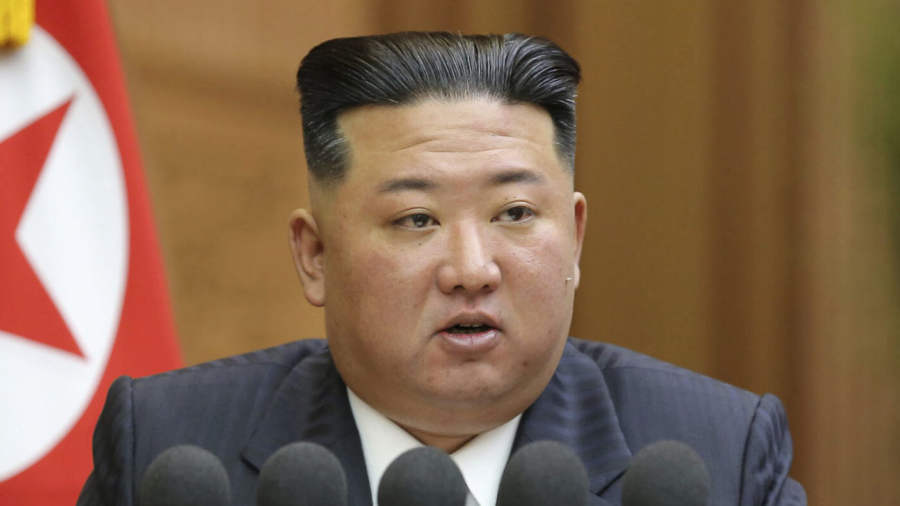North Korea accused the United States and South Korea of escalating tensions “to the brink of nuclear war” through their recent joint military drills, with the communist dictatorship vowing to respond with “offensive action.”
North Korea’s state news agency, KCNA, published a commentary by Choe Ju Hyon—who the agency referred to as an international security analyst—criticizing the exercises as “a trigger for driving the situation on the Korean peninsula to the point of explosion.
“The reckless military confrontational hysteria of the U.S. and its followers against the DPRK [Democratic People’s Republic of Korea] is driving the situation on the Korean peninsula to an irreversible catastrophe … to the brink of a nuclear war,” the article said.
“The drills have turned the Korean peninsula into a huge powder keg which can be detonated any moment,” Choe wrote in the article, taking particular offense at the participation of aircraft carriers in the exercises. He added that North Korea would respond with offensive action.
Regular Drills
United States and South Korean forces hold a series of springtime exercises each year, which typically involve air and sea drills. This year also included the first large-scale amphibious landing drill in five years.
About 12,000 soldiers from the two allied forces took part, as did 30 warships, 50 amphibious assault vehicles, and 70 aircraft—including B-1B and B-52 bombers, as well as 10 F-35 fighters.
The exercises, called Freedom Shield 23, lasted for 11 days and ended on March 23.
While Pyongyang has called the exercises a rehearsal for invasion, South Korea and the United States maintain that the drills were purely defensive.
The U.S. marines used Twitter to describe the exercises as “a series of continuous-combined training exercises designed to enhance the ROK [Republic of Korea]-U.S. Alliance.”
The Department of Defense said that U.S. forces in Korea are “dedicated to maintaining a ‘fight tonight’ readiness and defending the Republic of Korea against all threats.” The DOD praised the joint U.S.-South Korean efforts, stating that their “combined defense systems are stronger, boosting security and stability in the region.”
North Korean Nuclear Brinkmanship
Two weeks ago, the KCNA announced that North Korea had successfully tested a new nuclear-capable underwater attack drone.
The following week, North Korea fired four ballistic missiles off its east coast in response to the drills.
The day after, the communist dictatorship unveiled newly developed miniaturized nuclear warheads that are claimed to be compatible with at least eight different launching platforms, including submarines and, possibly, intercontinental ballistic missiles capable of reaching the United States.
Kune Y. Suh, professor emeritus of nuclear engineering at Seoul National University, called it a worrisome development. “It’s something more powerful in a smaller package,” he said, comparing the new warheads to their 2016 predecessors.
According to KCNA, Kim Jong Un has claimed that “the enemy of the country’s nuclear forces” was not a specific state or group, but rather “war and nuclear disaster themselves.” The policy of expanding the nuclear arsenal was solely for securing regional peace and stability, the North Korean leader said.
After consulting with U.S. and Japanese nuclear envoys, Seoul’s foreign ministry condemned North Korea for its provocations. The ministry also announced that an agreement has been made to increase counter-measures against North Korea’s cyber aggressions, which has included stealing crypto currencies and other forms of hacking.
Japan’s foreign ministry said its nuclear envoy “strongly condemned” North Korea’s “unprecedented frequency and manner” of missile launches.
Reuters contributed to this article.

